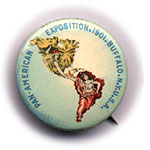
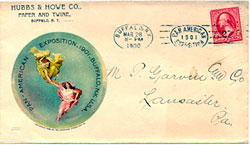
 |
Pan-American Emblem
|
 |
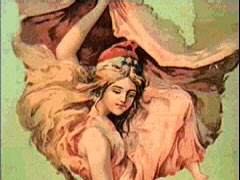 |
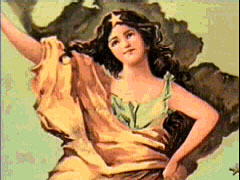 |
|
| One of the most enduring symbols of the 1901 Pan-American Exposition is the image of North and South America symbolized by two women whose flowing dresses form the shapes of the continents and whose hands are joined over Central America. The original painting was by Lockport, NY artist, Raphael Beck (1859-1947). The Lockport Union-Sun proudly reported this on December 4, 1900: |
|
Mr. Beck's Design Completed To the beauty of the design of the Pan-American seal which has made the work of our townsman, Raphael Beck, famous will be added the fact that in the work will be embalmed the loveliness of two of the most beautiful women in America. Maxine Elliot and Maude Coleman Woods have been selected out of hundreds in the beauty contest of the New York World as the most representatively beautiful women in America, and Mr. Beck's beautiful design will receive an added attraction when these women take a permanent place in his work. Miss Elliot is too well-kwown as the most beautiful woman on the stage to need further introduction to the public, while Miss Coleman [Woods] has been honored as the leading beauty of Virginia, her native state, by the Daughters of the Confederacy. |
The original watercolor design and a color lithograph are stored at the Buffalo & Erie County Historical Museum.
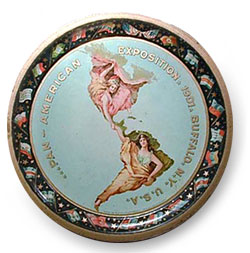 |
 |
 |
From the "Profitable Advertiser" June 1901: The emblem...was designed by Raphael Beck, and was among the first products of the [Advertising] department. It is a beautiful conception, typifying the friendship of the two Americas, and suggesting clearly the unity of their interests. In its execution the clever idea is happily combined with artistic treatment, the result being a picture that appeals to the sentiments and delights the eye. The Emblem has been most effectively utilized as an advertisement for the Exposition. Half-tone reproductions have appeared in thousands of publications at home and abroad, it has been shown in almost every booklet, folder, and circular published by the Exposition, and it has been issued as a separate and distinct feature of Exposition publicity. It was reproduced in three colors on cards 3 by 5 ins. and printed in vast quantities, the total number being 2, 296,579. These cards were issued in English, Spanish, French, and Portuguese, and circulated throughout the world. It was also reproduced in large size - nine inches in diameter - for hangers, of which over 100,000 were distributed. The hangers were lithographed in nine colors and were particularly attractive. Referring to them, a prominent railroad official recently said that their use was the greatest piece of advertising work he had seen since the Centennial Exposition at Philadelphia twenty-four years ago. |
||